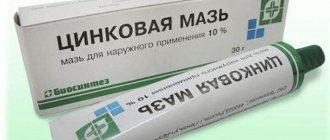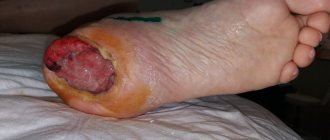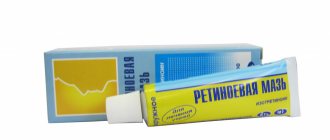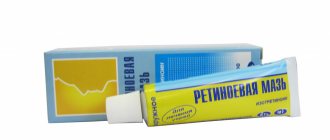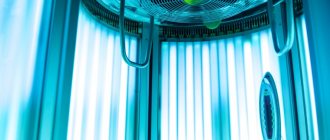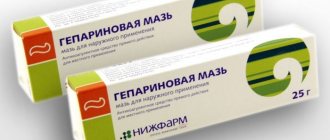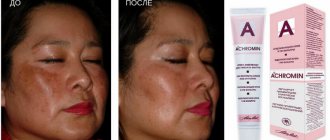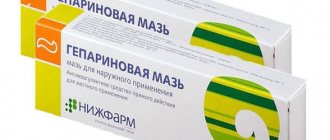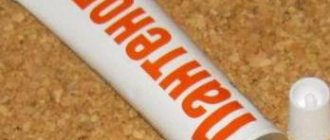Zinc ointment is one of the best remedies in the fight against diaper rash, excessive sweating and acne. It provides the necessary skin care, disinfecting and protecting from external adverse factors. The low price makes it accessible to consumers, and the low percentage of allergic reactions gives it the right to be called safe for babies.
How to use zinc ointment
Zinc ointment is used in pediatrics as a protective agent against diaper rash. In addition, it is recommended to lubricate the baby's delicate skin under the diaper every time after bathing. Zinc creates a reliable barrier that protects children's skin from constant contact with urine and loose stool. By applying zinc ointment to the buttocks daily, you can protect your baby from diaper dermatitis.
The disinfecting effect of the drug is used when treating wounds. By applying the composition to abrasions, you can avoid infection, prevent acidification of the damaged surface, and speed up the process of skin regeneration.
The main indications are:
- diaper rash;
- scratches;
- dermatitis;
- eczema;
- cuts.
In addition, zinc ointment is used to care for the elderly and immobile patients. Treatment of bedsores slows down their spread and disinfects, which eliminates the risk of secondary infections.
Composition and release form
The ointment is a white or slightly yellowish thick mass, packaged in aluminum tubes, polymer or glass bottles. Most manufacturers choose the first option for packaging the medicine, as it is the most convenient for the consumer. The patient can purchase a small tube of ointment (25 or 30 g), medium (50 g) or large (100 g) depending on the severity of the problem and the planned duration of treatment.
The main active ingredient of the drug is zinc oxide, its mass fraction in the total volume is 10%. Zinc is an essential biomineral contained in several hundred enzymes in the body. Zinc ointment uses its compound with oxygen, which has many healing properties.
Medical Vaseline is used as an auxiliary component. Thanks to its soft structure, the ointment is easily distributed over the surface of the epidermis. Vaseline balances the drying effect of zinc and prevents the skin from losing precious moisture.
Classic zinc ointment contains only the two indicated components. However, some pharmaceutical companies produce varieties of drugs that additionally contain menthol, retinol (vitamin A) and tocopherol (vitamin E).
How does zinc ointment work on acne?
Use in cosmetology has shown its effectiveness against acne. Skin rashes caused by excessive secretion from the sebaceous glands may disappear if zinc ointment is used correctly:
- Cleanse skin of makeup and impurities.
- Wipe skin dry.
- Apply zinc ointment to the area affected by acne.
- Leave overnight.
Zinc will dry out areas of the skin and prevent the sebaceous glands from producing sebum.
Post-acne therapy
No matter how effective the treatment is, acne always leaves traces. These may be pigmented spots or scarring of the skin. Good results from acne marks are demonstrated by two components together - salicylic acid and zinc oxide in the form of a paste. This is a combination drug in which zinc oxide dries, and salicylic acid acts as an antiseptic, anti-inflammatory component and keratolytic. Acid with a keratolytic effect softens the epidermis, causing it to peel.
Along with the horny scales, microorganisms are also partially removed from the surface of the skin. Therefore, the combination remedy is more useful for acne spots than for treating acne directly.
Do I need to wash off zinc ointment from my face?
The constant presence of zinc on the skin of the face can lead to dryness and flaking. However, this depends on the individual characteristics of the sebaceous glands. If pathological activity is noted, the zinc ointment may not be washed off, but in this case there is no need to apply foundation and other cosmetics on top of it: firstly, this will clog the pores, and secondly, the compositions of some products may react with zinc, which may lead to chemical reactions between components.
If the ointment is not washed off during the day, be sure to cleanse the skin by washing before the next application. Otherwise, the accumulation of daytime dust in the pores with ointment residues can give rise to a new skin problem.
Reasons for appearance
Human skin has a complex structure; in addition to the cells themselves, it contains hair follicles, sweat and sebaceous glands. If the functioning of the latter is disrupted, their ducts narrow, making it difficult for secretions to reach the surface. It accumulates inside the gland, creating ideal conditions for the proliferation of bacteria and the formation of inflammation.
Over time, swelling occurs in the area of the pimple, and collagen begins to be actively produced in this area. This means that denser tissue is formed, so patients’ requests often sound like this: “How to remove post-acne scars on the face?” The capillary network also grows and the work of pigment cells is stimulated. Darker stains are formed that are more durable.
Also factors that provoke the negative consequences of acne are:
- long-term fight against inflammation;
- unprofessional acne removal;
- the presence of nodules or cysts on the skin.
Persistent acne
Post-acne may be a consequence of this phenomenon, which cannot be dealt with for a long time. As a rule, to solve this problem it is recommended to do a hormone test.
The fact is that the receptors of the sebaceous glands, which are directly involved in the process of acne formation, are sensitive to male hormones, androgens (they are produced in the body of both women and men). An increase in their production also leads to a decrease in the content of linoleic acid in sebaceous secretions, and subsequently to the reliability of the skin’s protective barrier.
Such situations, and therefore prolonged inflammation on the surface of the epidermis, can be provoked by the following factors:
- puberty;
- endocrine diseases;
- obesity;
- menopause;
- gastrointestinal diseases;
- taking medications;
- stress;
- chronic fatigue syndrome, etc.
Mechanical damage to the skin
In order not to solve the problem of how to quickly get rid of post-acne scars forever and remove neoplasms, during the period of exacerbation of acne, it is recommended to avoid rough influence. Squeezing pimples, as well as mechanical damage (often resulting from careless care), leads to the formation of scars and age spots in this area. This is especially dangerous for people with dark skin, and also if the patient’s age exceeds 35 years. The peculiarities of the functioning of the endocrine glands during this period often lead to the formation of scars after acne and acne.
Mechanical injury to the face can also result from inaccurately performed cleaning or deep peeling. These procedures are not recommended during an exacerbation period.
Contraindications
The ointment is not used to treat skin diseases in patients prone to allergic reactions to the components of the drug.
Zinc ointment is not applied to the mucous membranes of the mouth. Once zinc enters the bloodstream through the esophagus, it can cause poisoning, which can lead to convulsions, allergic skin reactions, nausea, vomiting and dizziness. Exceptions may be the mucous membranes of the anal ring and foreskin, where the ointment can be applied to relieve the inflammatory process, accelerate the healing of cracks and disinfect the surface.
Kinds
The consequences of acne are of several types:
- scars - at the site of the pimple, an area of dense tissue is formed, which is noticeably different from the surrounding skin and is characterized by a high content of collagen fibers;
- pigment spots - they form at the site of acne rashes and are noticeably different from the general tone;
- congestive erythema - a complication that occurs as a result of inflammation of small vessels, as well as subcutaneous fatty tissue and is accompanied by redness and thickening at the site of the former pimple;
- whiteheads, enlarged pores, etc.
To understand how to get rid of post-acne on the face and what removes it well, you need to establish which of the main types your problem belongs to. Only after this can you create an effective comprehensive treatment program.
We recommend
Curacen Essence (20 fl x 2 ml)
Nanoneedles with ultra-thin walls 30G
Nanoneedles with ultra-thin walls 33G
Curacen – for injection
Enlarged pores
The fact is that these are opening ducts of the sebaceous glands and the problem is directly related to acne. They expand due to hormonal imbalances, increased oily skin, poor diet, use of inappropriate cosmetics and other reasons. An additional factor that has recently been identified is the impact of free radicals, their content is increased in the atmosphere of large cities. In search of a way to exactly how and whether it is possible to cure post-acne on the face, you need to find out why the pores are enlarged.
Should we fight this problem? Certainly. They look unaesthetic, worsen the dermal relief, and in addition, they are an entry point for infections and are clogged with the secretion of the sebaceous glands. The processes of skin respiration and metabolism are disrupted.
To avoid enlarged pores and acne formation, you can undergo professional cleaning on time. This procedure stimulates their narrowing and normalizes the functioning of the sebaceous glands. With its help, you will stop thinking about how to get rid of post-acne spots and remove redness on your face with the help of a cosmetologist.
Stagnant traces
They are also called erythema. They arise as a result of capillary expansion. As a result, red areas form on the skin. In some cases, such phenomena go away on their own, especially if they arise as a response to mechanical stress, due to a reaction to intense sun or similar factors.
But most often, it is better to consult a specialist with such a problem, since usually the consequences of this kind are persistent and cannot be removed with home remedies.
Hyperpigmentation (brown spots)
Increased skin pigmentation usually occurs as a result of inflammation of papulopustular elements. Papules are inflamed small nodules with a diameter of 2-4 mm. Pustules are nodules with a cavity filled with pus formed inside them. A light-colored crust may form on their surface.
The formation of hyperpigmentation is usually promoted by active solar and mechanical exposure, for example, when trying to squeeze out pimples.
Whiteheads
The problem of how to effectively get rid of post-acne, how to cure the consequences of inflammation, is especially aggravated if the skin lesion takes the form of whiteheads (milia).
As a rule, they are localized in the following areas of the face:
- forehead;
- nose;
- cheeks;
- chin;
- around eyes.
Most often, milia appear during periods of hormonal changes, including adolescence, as well as during pregnancy. The second factor influencing the formation of whiteheads is increased fat content.
Ways to effectively remove post-acne scars, how to get rid of them in these situations, should include changing your diet, a competent approach to skin care, as well as monitoring hormonal levels and its timely correction.
Scarring
They can form where pimples once were. Studies have been conducted in which it was found that about 1% of people who have suffered from acne suffer from them. However, approximately one-seventh of scars are disfiguring in nature, which means they lead to serious psychological problems. This condition requires an individual approach and careful study of the quality of the skin around the scar. Also, the nature of treatment depends on the stage of maturity.
How to use zinc ointment for sweat
Excessive sweating is a problem that zinc ointment helps combat. Violation of the function of thermoregulation leads to excessive production of sweat by the glands, due to which the body tries to reduce body temperature. Zinc ointment does not affect the center of thermoregulation, however, it can reduce the activity of the sweat glands, thereby reducing the amount of sweat produced.
It should be noted that the sweat produced by humans is odorless. The waste products of bacteria that multiply in the armpits, which contain a favorable environment for the proliferation of microorganisms, smell. Zinc ointment, having an antiseptic effect, reduces the rate of bacterial growth, thereby eliminating unpleasant odors.
